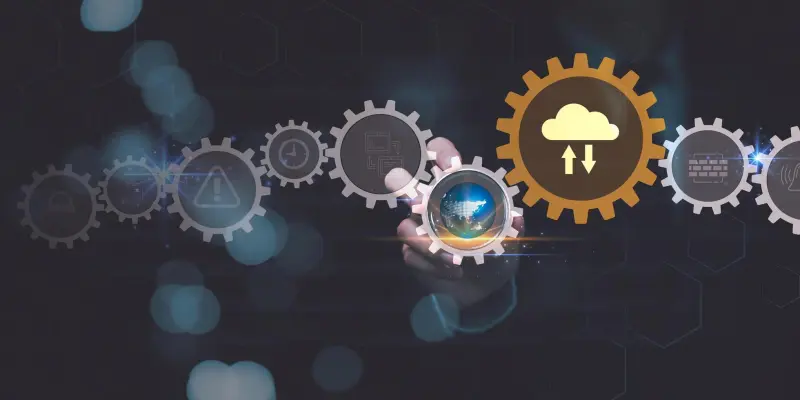The evolution of IT operations from labor-intensive practices to AI-driven intelligent automation marks a significant transformative shift within the industry. This shift is propelling organizations away from traditional robotic process automation (RPA) and towards more sophisticated and efficient intelligent automation (IA). The transition emphasizes the need for intelligent change management to navigate and overcome historical barriers ingrained in legacy systems. It is crucial to understand how these advancements enable a seamless transformation, leveraging AI and machine learning (ML) to drive operational efficiency and improve business outcomes.
Historical Development and Legacy Limitations
The historical development of IT operations is characterized by labor-intensive tasks divided into specialized, siloed operational towers. These silos resulted in standard procedures catering to end-user support through multiple channels like phone, email, chat, and self-service via IT service management (ITSM) tools. In parallel, data center operations depended on monitoring and event management tools connected to ITSM systems. Despite their intent to improve service delivery, these methods inadvertently solidified inflexible technological and procedural silos, which restricted adaptability and efficiency.
End-user support traditionally relied on metrics such as first call resolution (FCR) and average call handling time (AHT) to gauge performance. On the other hand, data centers operated under extensive service-level agreements (SLAs) to ensure availability and performance. However, these agreements often led to reactive support services, which, despite being rigorous, were hampered by rigid procedural barriers and disjointed operations. The reactive nature of these measures frequently resulted in suboptimal outcomes, emphasizing the need for a more proactive and integrated approach to IT operations.
Legacy Approaches and Their Drawbacks
Legacy approaches to addressing IT issues predominantly involved expanding personnel and adhering to bureaucratic processes. End-user support depended heavily on traditional communication channels like phone and email for even the simplest tasks. This reliance led to inefficiency and prolonged resolution times. Similarly, data center operations frequently assigned engineers to monitor and verify incident tickets, many of which did not yield actionable outcomes, resulting in unsustainable operational costs.
Generative AI platforms have starkly highlighted the inefficiencies within these legacy systems. The introduction of AI-driven solutions underscores the critical need to move towards intelligent automation. IA offers significant enhancements in support roles and represents a paradigm shift propelled by economic pressures, stringent margin requirements, and heightened competition. This shift is evidenced by the growing adoption of self-help options and intelligently automated systems, which have proven to significantly reduce resolution times for common issues and streamline overall support functions within organizations.
Paradigm Shift Toward Intelligent Automation
Entities, such as those within the banking and e-commerce sectors, have increasingly moved away from traditional support channels in favor of more advanced, intelligently automated systems. This shift is underscored by a growing preference for self-help solutions, which leverage AI to provide proactive support and significantly reduce resolution times for common issues. Financial systems, for instance, have successfully implemented self-help options for common functions like password resets, while e-commerce platforms have streamlined order tracking processes through IA. The adoption of proactive support mechanisms has rendered many legacy metrics and oversight protocols obsolete. Unlike RPA, which aims to enhance existing inefficient processes, IA disrupts traditional support models by empowering users through innovative self-help solutions. This evolution promotes user independence and significantly improves the efficiency and effectiveness of support services, signaling a departure from outdated methodologies and ushering in a new era of intelligent automation in IT operations.
Importance of Intelligent Change Management
Despite IA’s successful implementation in various consumer applications, its penetration into enterprise IT support remains relatively limited. This limitation primarily arises from a lack of intelligent change management strategies. Effective change management is crucial to facilitating seamless transformations, ensuring that the transition to IA does not necessitate extensive user training. By leveraging decades of customer satisfaction data, interaction information, and contact center metrics, organizations can develop intelligent change management strategies that facilitate smooth user adaptation and improved business outcomes. The necessity of adopting intelligent change management strategies within enterprise IT operations cannot be overstated. These strategies are instrumental in actualizing the full benefits of IA, enabling organizations to navigate the shift away from legacy systems and towards more efficient, AI-driven support models. Through intelligent change management, enterprises can ensure that the adoption of IA is both seamless and effective, ultimately enhancing overall customer satisfaction and operational efficiency.
Strategies for Successful Implementation
The shift in IT operations from labor-intensive methods to AI-driven intelligent automation marks a major transformation within the industry. Traditionally, organizations relied on robotic process automation (RPA), but now, the focus is on advanced and more efficient intelligent automation (IA). This transition underscores the necessity of intelligent change management to successfully navigate and overcome deep-rooted challenges in legacy systems. It’s imperative to grasp how these technological advancements facilitate a smooth transformation by leveraging AI and machine learning (ML). These technologies drive operational efficiency, streamline processes, and enhance business outcomes. Intelligent automation not only addresses the limitations of RPA but also offers a more holistic approach to optimizing IT operations. As companies adapt, they must ensure that their strategies include continuous learning and improvement. This will help them stay competitive and fully capitalize on the benefits that AI and ML bring to the table, fostering innovation and long-term success in a rapidly evolving digital landscape.

